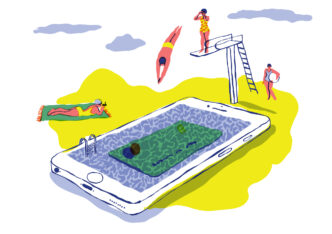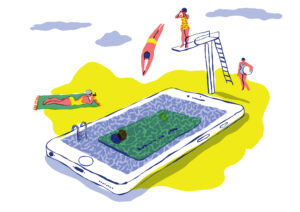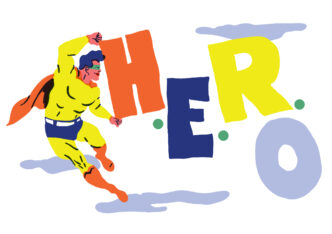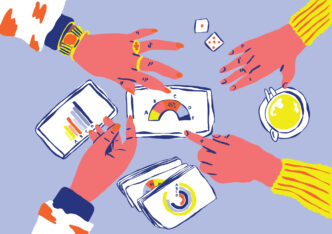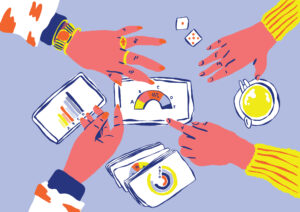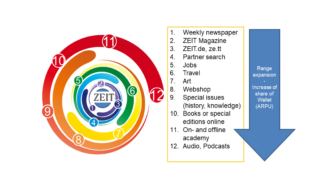
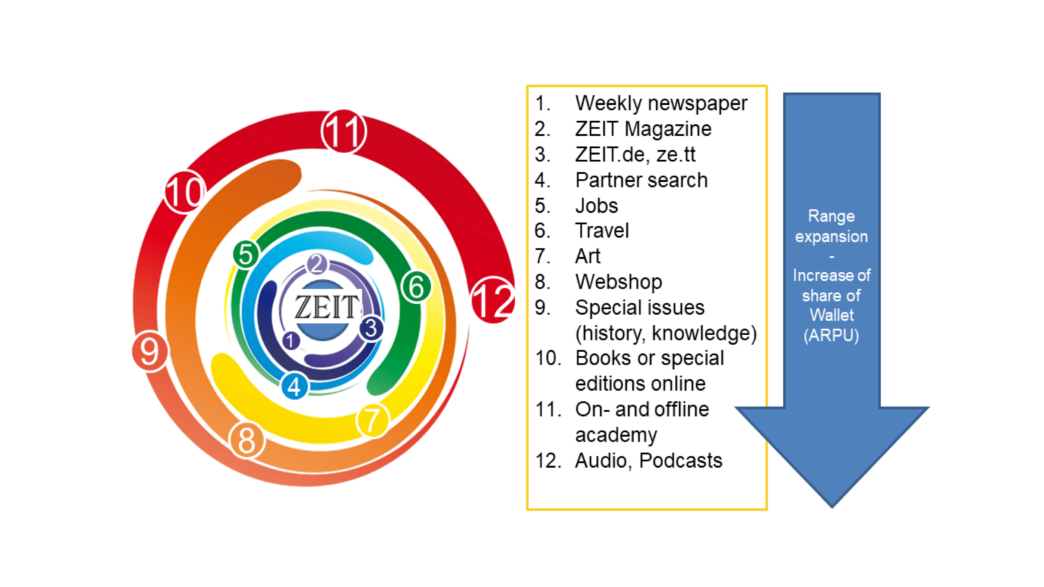
Digital publishing and media titles like to talk about subscribers, not customers. Unfortunately, this symbolizes one of the problems that these companies have had for years…
Until recently, it was possible to generate sales and profits in print with job ads or traditional advertising alone. But these days are over and, like a hamster in a wheel, publishers are pedaling frantically to generate new subscribers. With this, publishing has, in many cases, become a very expensive business (and even that is a prerequisite that “cost per new subscriber” is measured realistically).
What about subscriber retention? Well this needs to take a more important role to compensate, not only in publishing houses and media companies but across all industries.
This is where the loyalty flywheel comes in
When you hear the word loyalty, the first thing that comes to mind is consistency, whilst the term “flywheel” triggers dynamic associations. And that’s exactly what it is: giving a new dynamic to loyalty that companies have built up through long-standing relationships with their customers.
With the main goal of generating sales and revenue through subscriptions, many companies are missing a huge opportunity – the opportunity to turn the subscription relationship into a customer relationship, selling much more than just traditional publishing products.
Operationally, this means the company – in this case publishers – strategically expands its service and product portfolio to increase ARPU (average revenue per user), converting subscribers into customers.
As is so often the case, it helps to think outside the box
Let’s take Amazon as an example.
Anyone familiar with Amazon’s development will quickly understand how this picture should be understood.
Amazon’s success in building customer relationships began with books, gradually expanding across more product categories. With each additional category, customer loyalty – and share of wallet – grew. The resulting mass of customer relationships has grown into a full-service provider in the e-commerce sector through intelligent product range enrichment and cross-selling.
In the meantime, many customers are so firmly tied to the “Amazon” brand that they buy pretty much everything, even fruit and vegetables, from the international group. In other words, the trust and loyalty with Amazon is almost limitless. And this is even more true with Amazon Prime – around 60%* of all Prime customers, no longer compare prices with other sites (*Source: Speech at MarTech 2018 in Boston).
Let’s take a second example: Tchibo
Note that although Tchibo is struggling today (Sept. 2023), that doesn’t change the longstanding success story and principle.
Tchibo had to make a virtue out of necessity. At the end of the 90s, a price war began in the coffee industry. The coffee supplier’s reaction, namely to buy its toughest competitor Eduscho, did not solve the problem. The world market price for coffee came under increasing pressure, so that a profitable customer relationship or sustainable company development was hardly possible. In 1999, Dr. Thomas Vollmöller became Managing Director of Tchibo. His basic strategic idea: “Every day, at least every week, millions of people come into Tchibo stores. What else can we sell them?”
So, the employees analyzed the existing target and customer groups and used market research to clarify what else might be interesting for these people to buy besides coffee. This is how the motto “A new world every week” was born, under which Tchibo offers its customers new consumer goods on a wide variety of topics every week. On and offline. All in all, this was a strategic masterpiece that turned a business model under pressure into a successful future on the basis of existing customer relationships.
Now, how can this be implemented in media and publishing houses?
Yes, examples exist. I even have two: One is Die Zeit Verlagsgruppe GmbH & Co. KG and the other Haufe Group.
Let’s look at Die Zeit Verlagsgruppe (B2C) first
Dr. Rainer Esser’s story, from about 20 years ago, is still very clearly cemented in my mind (Marketing Club Stuttgart in the Commerzbank building). He told us how he’d preached the idea of needing additional offers – “Selling a weekly newspaper alone is a long-term risk, it makes us too dependent!”
The response: “Is that really necessary? We are a renowned publishing house after all!”
His answer, combined with hanseatic charm: “Please let us try.”
What emerged from this is nothing other than the loyalty flywheel strategy.
At the time, subscribers were mainly offered books and encyclopedias. Today’s offer has changed somewhat, but the main thing is that the publisher now makes about 30% of its sales from its additional business’.
Second, Haufe Group (B2B)
In the 1990s, Haufe Group recognized that it could no longer survive by simply offering loose-leaf publications given the increasingly digital media environment. At the same time, the software company, Lexware joined the Haufe Group, meaning an opportunity to expand into the digital space more easily. By consistently reorganizing and aligning its goals, tasks and processes with existing and potential customer groups, alongside targeted acquisitions, Haufe successively expanded its portfolio of offerings and was thus able to benefit from the matching attractiveness and loyalty of its customers.
Today, the company generates 95 percent of its sales with digital products, such as online services or apps. In 1990, the Haufe Group reported sales of 50 million euros – today, that figure is just over €500 million.
Thanks to two important decisions: Organizational focus on customer groups and the strategic principle of the loyalty flywheel.
Summary: A paradigm shift to the Loyalty Flywheel is more than necessary
A paradigm shift is essential for businesses looking to develop their revenues: it’s not just about increasing the number of subscribers, but also, in the spirit of customer relationship management, about expanding what else you can sell to the customer.
From ADAC, which has evolved from a car driver club into a commercial enterprise, to Glöckle Lotterie who sells electricity through its E.Vita brand, and a power tool manufacturer that now also sells jewelry and cosmetics to its craftsmen… businesses around the world are benefiting from the Loyalty Flywheel approach.
But the ultimate example of this is a plastics company. If a customer wants a certain product that it cannot supply itself, the company buys it on the market from a competitor or dealer and sells it on to its customer. In this way, the company retains ownership of the customer relationship.
And it’s this last sentence that sums it up once again. It’s all about building and maintaining a customer relationship – whether B2B or B2C. How this is designed depends on the individual target group. But one thing is important: building trust and thinking outside the box is the motto of a loyalty flywheel: The pretty simple question “What else can I sell to the customer?“


